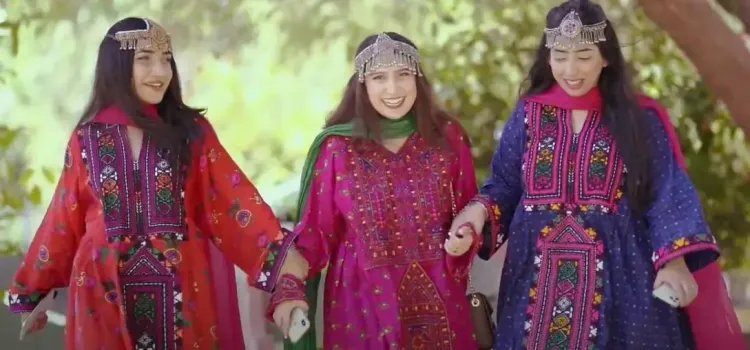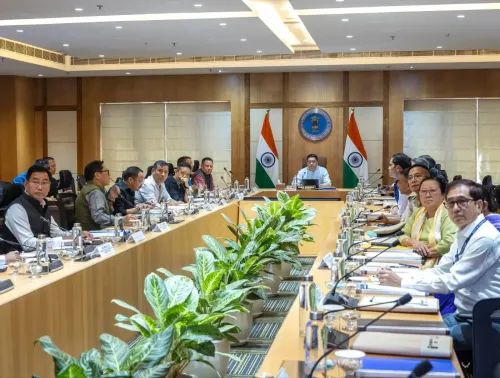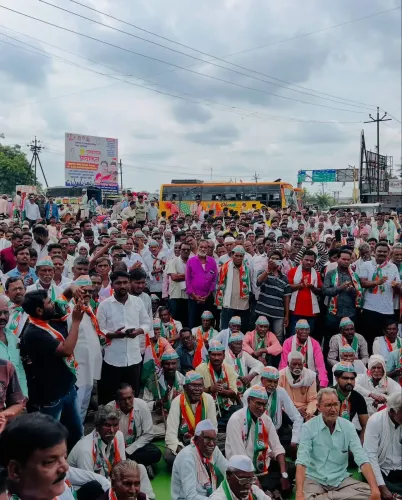Are West Coast Sindhis Genetically Different from Pakistani Sindhis?

Synopsis
Key Takeaways
- West coast Sindhis have a distinct genetic identity.
- They show connections to Burusho and Hazara-like groups.
- A unique East Asian genetic component is present.
- Demographic changes due to migrations occurred over centuries.
- The first high-throughput genetic study on this community was conducted.
Hyderabad, Oct 3 (NationPress) A recent study by scientists from the CSIR-Centre for Cellular and Molecular Biology (CCMB) in Hyderabad reveals that the Sindhi population on India's west coast possesses a distinctive genetic profile that sets them apart from their counterparts in Pakistan.
Dr. Kumarasamy Thangaraj, a CSIR Bhatnagar Fellow at CCMB, along with his colleague Dr. Lomous Kumar, discovered that the west coast Sindhis exhibit genetic links to the Burusho and Hazara-like groups from Pakistan, alongside a recent genetic fusion with local populations including the Konkani.
Dr. Kumarasamy noted that a unique East Asian genetic element found in the west coast Sindhis, unlike those in Pakistan, likely stems from minor admixtures, which may have occurred either through Mongolian migrations or interactions with Burusho and Hazara-like communities in modern-day Pakistan.
Burusho and Hazara are ethnic groups characterized by Mongoloid features in contemporary Pakistan.
“Our genetic investigation revealed that the Indian Sindhi population contains a small, distinct genetic contribution from East Asia, suggesting a much earlier integration into their genetic history, potentially linked to migrations from the Iron Age or later, such as the Mongols,” commented Dr. Lomous Kumar, a postdoctoral researcher at DST-Birbal Sahni Institute of Palaeosciences (BSIP), Lucknow.
“These findings provide clear evidence of demographic transformations and population movements in western India, associated with multiple migrations that occurred from the Iron or Middle Ages to recent post-independence times,” stated Dr. Vinay K. Nandicoori, Director of CSIR-CCMB.
The west coast of India boasts a rich tapestry of human populations. The vast area between the Arabian Sea and the Western Ghats has witnessed the migration of various West Eurasian groups, such as the Portuguese, Middle Easterners, Jews, Parsees, and Christian missionaries.
While recent research has examined the genetic connections of specific groups like Parsis, Jews, and Catholics, the origins and genetic ties of many communities along the southwest coast remain largely uncharted.
One such community is the Indian Sindhis residing along the west coast in Maharashtra. Due to the geographical closeness to the Sindh region of Pakistan, they have migrated to western India for centuries, with significant migration occurring during the partition of India.
Although extensive studies have been conducted on Pakistani Sindhis, there is a lack of genetic information pertaining to the Sindhis on the west coast of India, who are socio-culturally distinct from the Konkan coast.
The CCMB scientists have conducted the first high-throughput genetic study on the Sindhi population living on the west coast, exploring their common ancestry, local integration, and historical migration patterns.
The findings of this study were published on September 30, 2025, in the journal Human Genomics, where researchers generated genetic data utilizing 600,000 DNA markers, analyzing it through advanced statistical methods.









